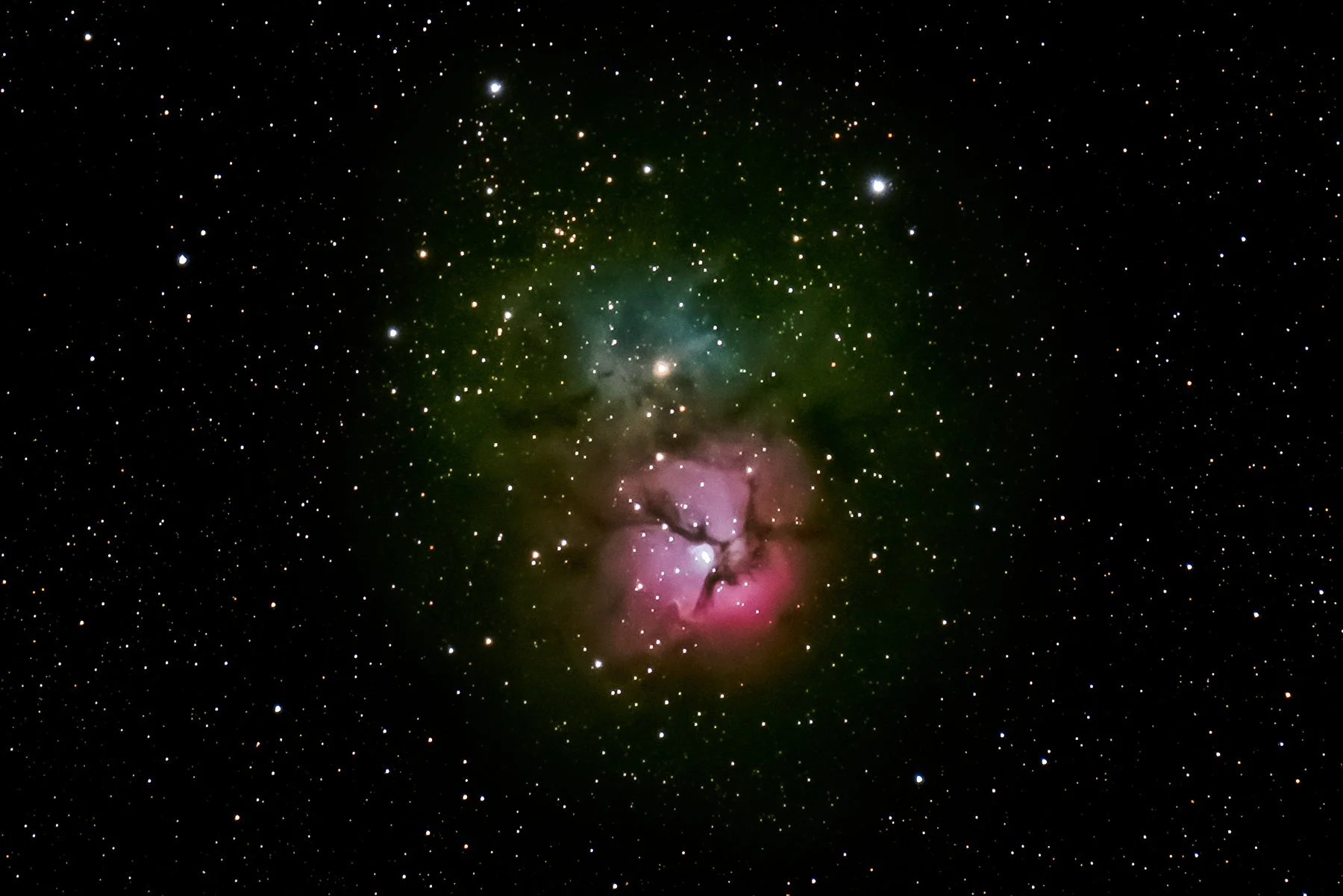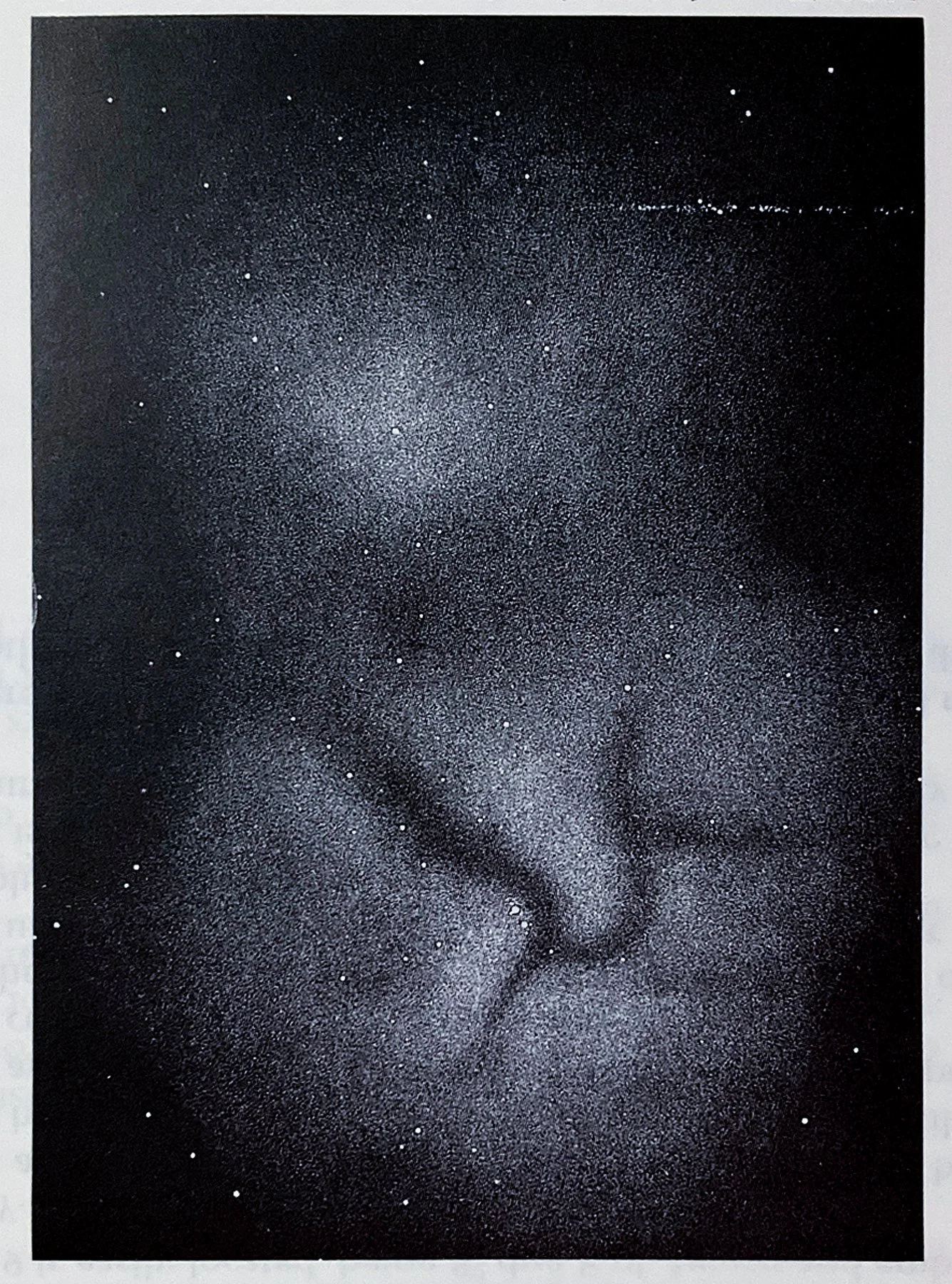M20 - Trifid Nebula
Type: Galactic Nebula
Discoverer: Messier, 1764
Size: 15 ly
Distance: 2660 ly
Constellation: Sagittarius
My Notes: On July 26, 2022, I captured M20 at Merritt Reservoir near Valentine, Nebraska. This nebula can be seen in the same field of view as M21 with my 600mm (918eq) lens. I was very astonished when I saw the first images of this nebula because it has blue in it! I don’t know how many of them have blue, but up until now I’ve only ever seen pinks and reds. I love the blue. Its name, Trifid, means lobed which makes sense given its sectioned appearance. John Herschel was the first to call it the Trifid Nebula. There are 6 stars at the center of the pink section. My images were only sharp enough to discern that it wasn’t a single bright star.
(The following is the same for M8, M17, M18, M20, & M21) This was the first time using my iOptron CEM26 goto mount and my Fujinon 150-600mm lens. After struggling to capture the first 17 images of this collection using an iOptron Skyguider Pro, I picked up the CEM26. I was waiting hours trying to adjust the field of view using the Skyguider. While I made it work, it wasn’t really designed for deep-sky objects. As such, I could only get about one object each night because it took so long to find it, get it in view, and focus on it. Using this CEM26 let me capture five objects in the same amount of time. It is a real improvement to the practice and made for a much more enjoyable night, though I did miss the hunt that usually comes from trying to locate the objects myself, which I understand makes up a lot of the fun for people with Dobsonian telescopes. Regarding the lens, it also made a huge difference. The internal zoom and focus meant that the lens did not drift as gravity affected it. Focusing was much easier, and it stayed focused longer as the temperatures shifted.
Messier Notes: (June 5th, 1764) ‘Cluster of stars a little above the Ecliptic between the bow of Sagittarius and the right foot of Ophiuchus. Reviewed 22 Mar. 1781.’
Smyth ‘…Gazed for the curious Trifid nebula… but though I could make out the delicate triple star in the center of its opening, the nebulous matter rsisted light of my telescope so that its presence was only indicated by a peculiar glow.’
John Herschel ‘Singularly trifid, consisting of 3 bright and irregularly formed nebulous masses, graduating away insensibly externally but coming up to a great intensity of light at their interior edges where they enclose and surround a sort of 3-forked rift or facant area, abruptly and uncouthly crooked and quite void of nebulous light. A beautiful triple star is situated precisely on the edge of one of those nebulous masses just where the interior vacancy forks into two channels.’
18 Frame Stack - mean - 60 sec at f/10 600mm (918eq) ISO 6400 Fujifilm X-T4 XF150-600F5.6-8
Historical drawing by Trouvelot in 1874
M20 & M21 in the same field of view



